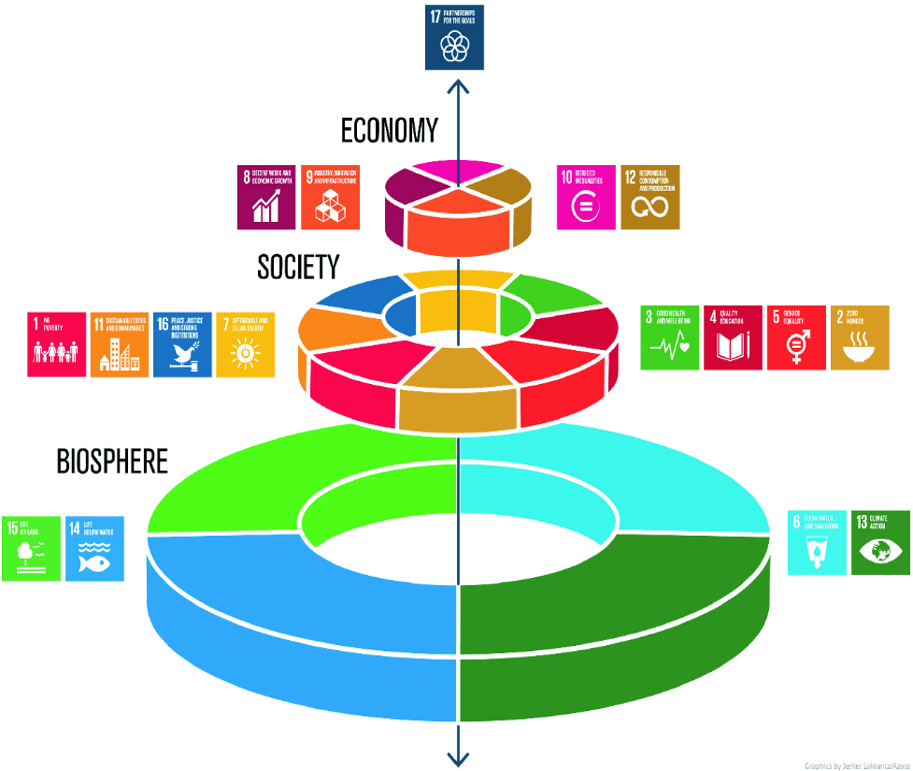How to Map Your Module
Use this self-evaluation tool to examine the extent to which you are teaching the SDGs coverage in your modules.
Directions:
A - Look through the list of SDG in the table below and pick the SDG that most aligns with your module content. Click on any of the goals to launch a detailed description in your browser which includes specific SDG targets.
B - Enter a score between 0 to 5 in the "Module (0-5) column" of the "Map Your Module" table below where:
| Value to Enter | Description |
|---|---|
| 0 | No coverage |
| 1 | Indirectly or unknowingly including topics related to the SDG |
| 2 | Provides insight into the SDG from the perspective of One's Own Discipline |
| 3 | Uses inter-or transdisciplinary approach to address at least one SDG Target |
| 4 | Assessment of SDG knowledge in relation to module and/or programme Learning Outcomes |
| 5 | Uses Action Oriented Pedagogies related to SDGs and/or Community Outreach |
C - If other SDGs receive a secondary attention in your module, then score as in step B
D - View your spiky radar graphs below. The first graph displays all 17 SDGs while the second displays your top score in the three SDG pillars.
To start populating the graph press enter on any of the values you have scored between 0 and 5.
You can print or save your results as a PDF. Right Click anywhere on the page and click Print. In the top right where Destination is displayed you can select a printer or Save as PDF.
Map your Module
| Individual SDGs (click link for more info 2) | SDG Pillar | Module (0-5) |
|---|---|---|
| 1: No Poverty | Social | |
| 2: Zero Hunger | Social | |
| 3: Good Health and Well-being | Social | |
| 4: Quality Education | Social | |
| 5: Gender Equality | Social | |
| 6: Clean Water and Sanitation | Environment | |
| 7: Affordable and Clean Energy | Social | |
| 8: Decent Work and Economic Growth | Economy | |
| 9: Industry, Innovation and Infrastructure | Economy | |
| 10: Reduced Inequality | Economy | |
| 11: Sustainable Cities and Communities | Social | |
| 12: Responsible Consumption and Production | Economy | |
| 13: Climate Action | Environment | |
| 14: Life Below Water | Environment | |
| 15: Life on Land | Environment | |
| 16: Peace & Justice Strong Institutions | Social | |
| 17: Partnerships to Achieve SDGs | Social |
Reflection on the Tool
| Reflection on the Tool | |
|---|---|
| 1 | Did you identify at least one SDG and/or SDG Target covered in your module? Is that topic introduced in the context of the wider discipline or societal need? |
| 2 | Do you inadvertently cover concepts expressed by the SDGs? If so, how could you signpost those topics to increase student understanding of the SDGs and sustainability literacy? |
| 3 | Do you elaborate on the interconnected nature of the SDGs? Was this used as a gateway to inter- or transdisciplinary discussion? Could you include a guest lecturer in your module? |
| 4 | Do you cover SDGs from more than one SDG Pillars as displayed in the second graph? If so, do you make students aware of this linkage? Do you discuss in terms of transdisciplinarity? (see figure below) |
| 5 | How might your further enrich your module with discussions, group projects, assessments, etc. You might find helpful ideas in the Toolkit's SDG Resource Library here |
| 6 | Can you incorporate concepts of sustainability and the SDGs into your Learning Outcomes? If so, are your modules Activities, Assessments and Learning Outcomes in alignment? |

The figure to the left is often called the wedding cake image of the SDGs. It represents the Environment or Biosphere being the foundation of our society and our natural capital through ecosystem services. The next layer is Social and is unified by the premise of leaving nobody behind and everyone having dignity and equal opportunity. The Economic layer is driven by inclusive growth within safe operating parameters. The pinnacle expresses the partnerships needed to advance the SDG targets such as between private and public sectors or the global north and south.


